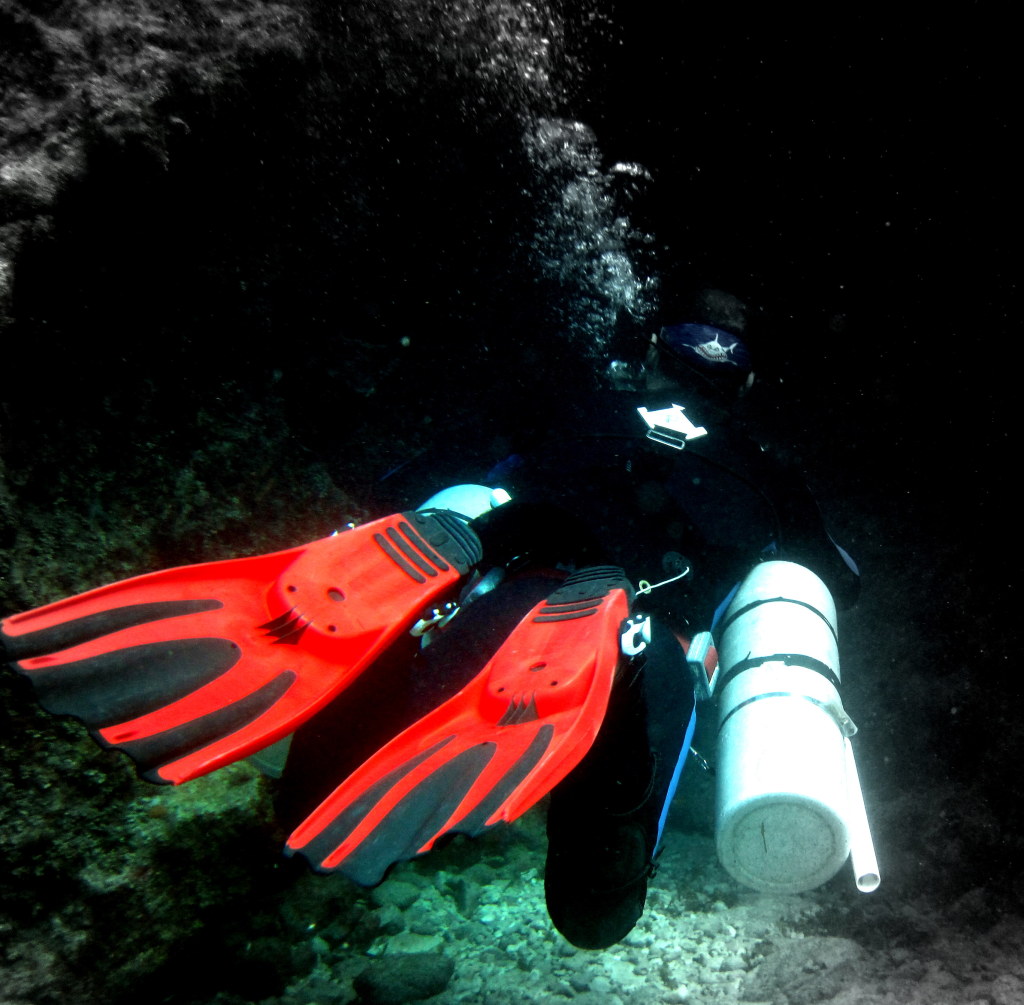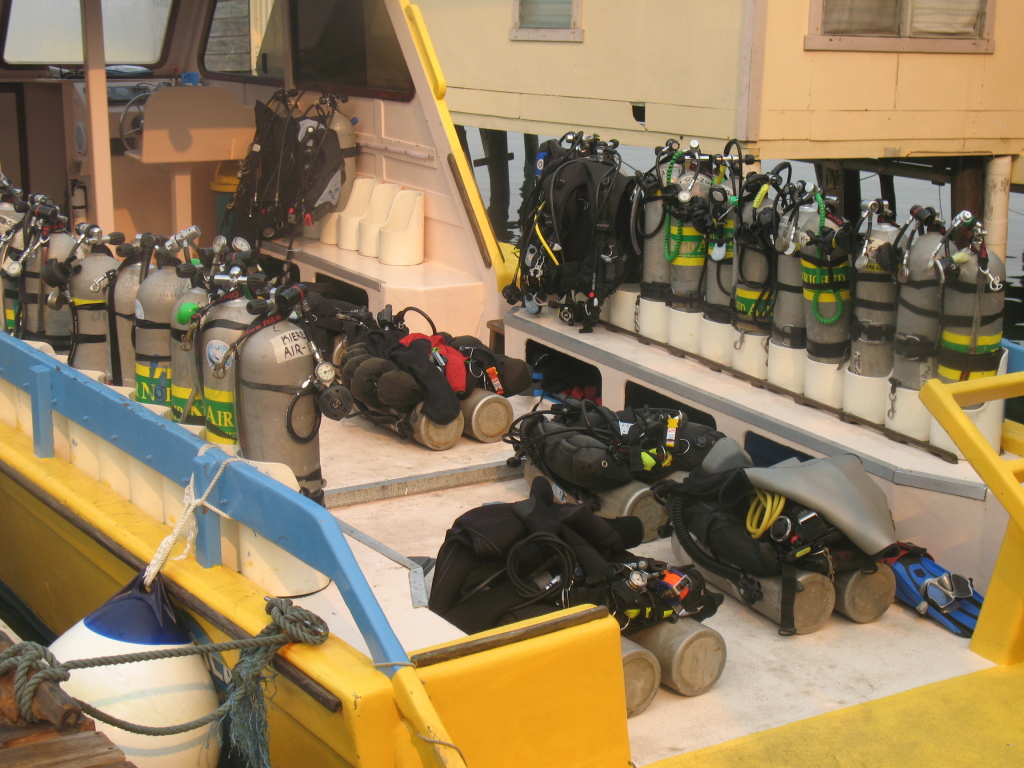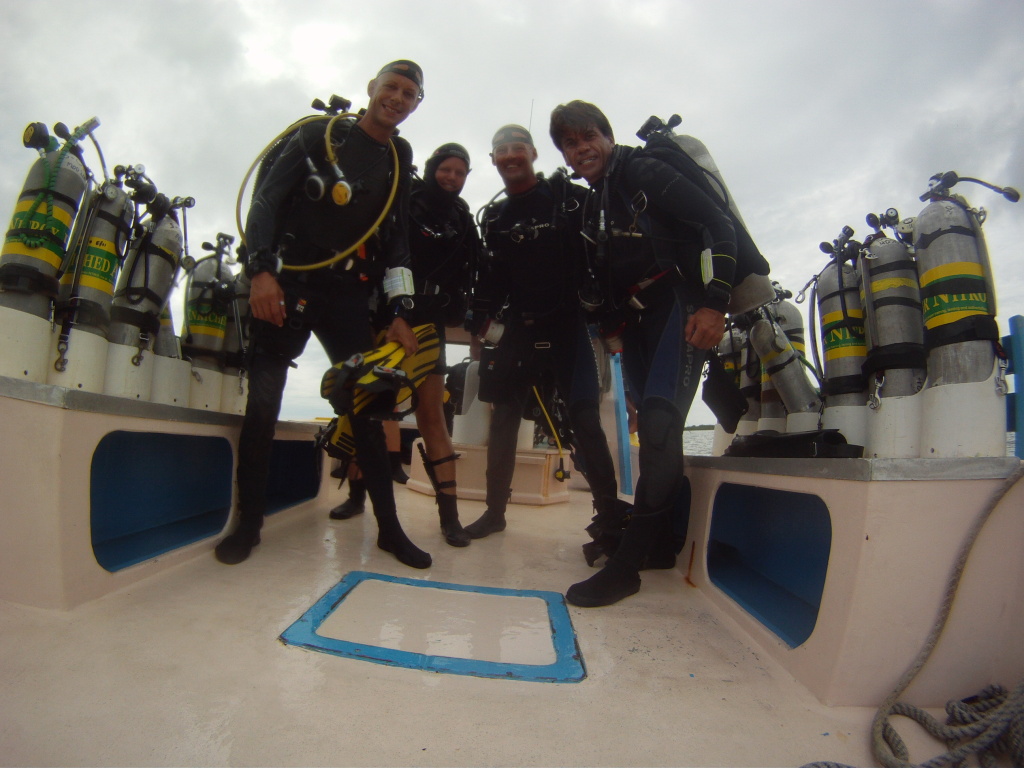Perhaps you’re curious about what you’ll see at deeper depths, or perhaps the natural explorer is awakening in you as you max out on a dive at 130 feet. Anything below the recreational limit is within the purview of technical diving, and it may be the new personal challenge you’re looking for. While this niche activity has grown in popularity in recent years, it’s not for everyone. Here we’ll take a look at 10 signs that you may be ready to enter the realm of technical diving.
You’re within your comfort zone at recreational limits
While the dive-training agencies such as PADI, TDI and IANTD require a minimum number of prerequisite dives to begin the first level of tec-diving courses, you won’t just have met these required minimums; rather, you’ll be quite comfortable at these maximum depths, while maintaining a constant awareness of your time and gas level during the dive. Divers who are at ease in the water have a high level of environmental awareness and situational skills, such as assessing strength and direction of currents and reading dive buddies’ behavior.
Buoyancy and trim – you walk the talk
These fundamentals are covered in most entry-level scuba classes, yet while all divers learn about these skills early on, many still struggle to attain not only precise buoyancy control but also horizontal body positioning on descents, during the dive, on ascents and safety stops. Buoyancy and trim are the drill sergeants’ equivalent of “head up, chin in and chest out.” If you can maintain a steady depth in your dive profile — especially on a safety stop — with minor fluctuations, and dive most of your profile in a horizontal position, with your thighs in line with your torso, calves at approximately 90 degrees, and fins above the rest of your body, then you’ve got the fundamental skills down.
You’re intrigued by technical divers
Maybe you’ve heard technical divers discuss their plans on board a dive boat or seen them gear up; perhaps you’ve observed them descend below you at a dive site or return from deeper depths, and this also awakens a desire to learn more. You may look up to these divers as sport role models. Most technical divers are good role models and eager ambassadors for the sport, so choose the right time and ask them about their experiences.
Your inner explorer awakens at 130 feet (40m)
Most divers have an inner explorer; it’s this hunger for discovery that led us to diving in the first place. After a time, some recreational divers find that diving to the maximum limit is not enough anymore, and they’ve got an insatiable curiosity about what lies beyond 130 feet. Next time you’re diving on a deep wall, if you find yourself wondering what else is beneath you, it might be time to consider the next step in your diving evolution. Many phenomenal dive sites are beyond recreational limits, and technical training will allow you to explore these safely.
You have an interest in wreck diving
In concert with the above point, many wrecks, particularly those that were not purpose-sunk, lie beyond recreational limits and make world-class dives. Wrecks such as the Andrea Doria in the U.S. and HMS Victoria in Lebanon require technical training due to their depths and locations, but others may sit within recreational depths. The Zenobia in Cyprus and Thistlegorm in Egypt are within recreational limits but, due to their size, may require a planned dive time that takes you into required decompression stops.
Dive tables and decompression physiology make sense
Even if these topics don’t yet make sense, you’ve got an interest in them and don’t shy from study. While most modern-day technical dives are planned using desktop software and advanced multi-gas dive computers, it’s still important to know the theory behind their workings. Tissue loading, decompression theory, off-gassing, oxygen window and gradient factors are some of the topics covered in the theory sessions, and if it’s been a while since you last planned a dive using tables we recommend reviewing your air/nitrox tables again prior to enrolling in a technical diving class.
You find new dive gear sexy
Who doesn’t like shiny new dive equipment? As technical diver you’ll be investing in a lot more of it, and when diving deeper and longer your equipment takes on even an even bigger role as a life-support kit. In the same way a skydiver carries a spare parachute, a technical diver often has a back-up BCD/inflation system, dual regulators, redundant depth gauge/time, a back-up computer and additional accessories that may be needed in emergencies and for contingency planning, since ascending to the surface is often not an option on a technical dive once a decompression obligation has been incurred. In addition to thorough training, good equipment will help keep you safe.
Health and fitness matter to you
You don’t have to be running marathons, bench-pressing extreme weights or be an ironman to be a technical diver, but you do try to exercise on a regular basis, eat a balanced diet and stay hydrated all the time. Due to the nature of deeper diving — longer times in the water and additional gear, including double tanks — a higher level of stamina and strength is needed than for recreational dives.
A good attitude
One of the most important attributes of a successful technical divers is his attitude; characteristics such as patience, humility, open-mindedness, curiosity and being a team player define not just entry-level and beginner technical divers, but also the more experienced technical diver. There’s little room for overbearing egos on tec diving teams, and a good attitude is just as important for a tec divers’ safety as his motor skills.
You like to wear black
As Henry Ford said, “You can have any color you want as long as it’s black.” This too seems to be the tec-divers mantra, as one can’t help but notice, over many years of technical diving, that tec divers love to wear black. Whether drysuits or wetsuits, BCDs, wing systems or masks, everything is black. When out of the water even their T-shirts are black. So if you, too, think black is the new black, technical diving may be for you.
If you’re ready to take your diving to the next level, seek out a reputable and qualified instructor and facility. There are many great locations worldwide that offer year-round, ideal conditions for recreational divers to transition into technical diving; Dahab, Egypt, Utila, Honduras, Florida in the U.S, Malta, Thailand and the Philippines all offer both great conditions and exemplary training under the main agencies PADI, TDI, IANTD, RAID and SSI. Once you’ve gone tec, there’s no going back.




